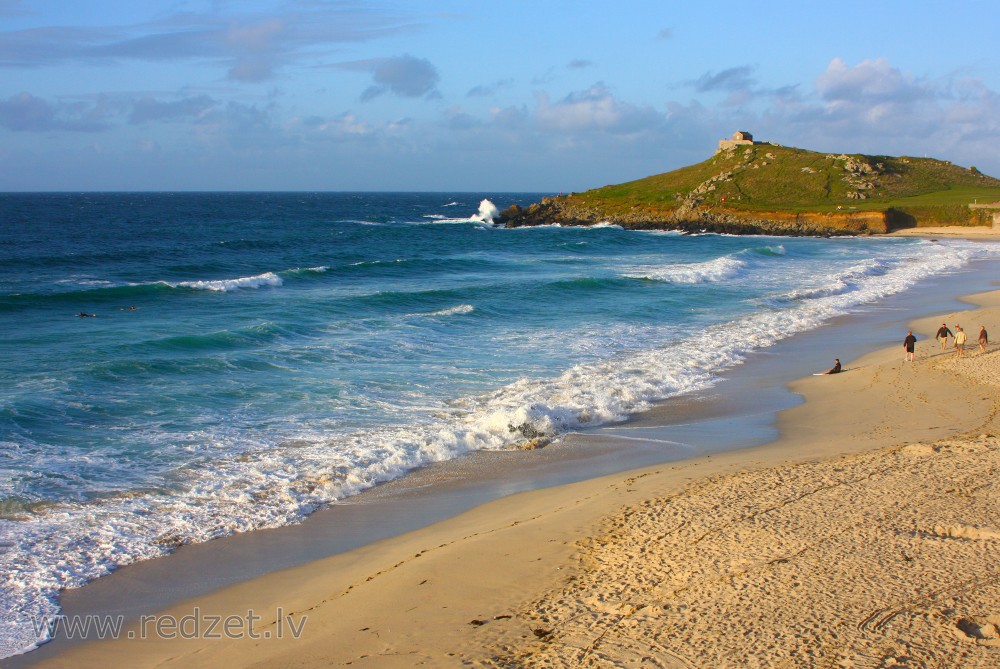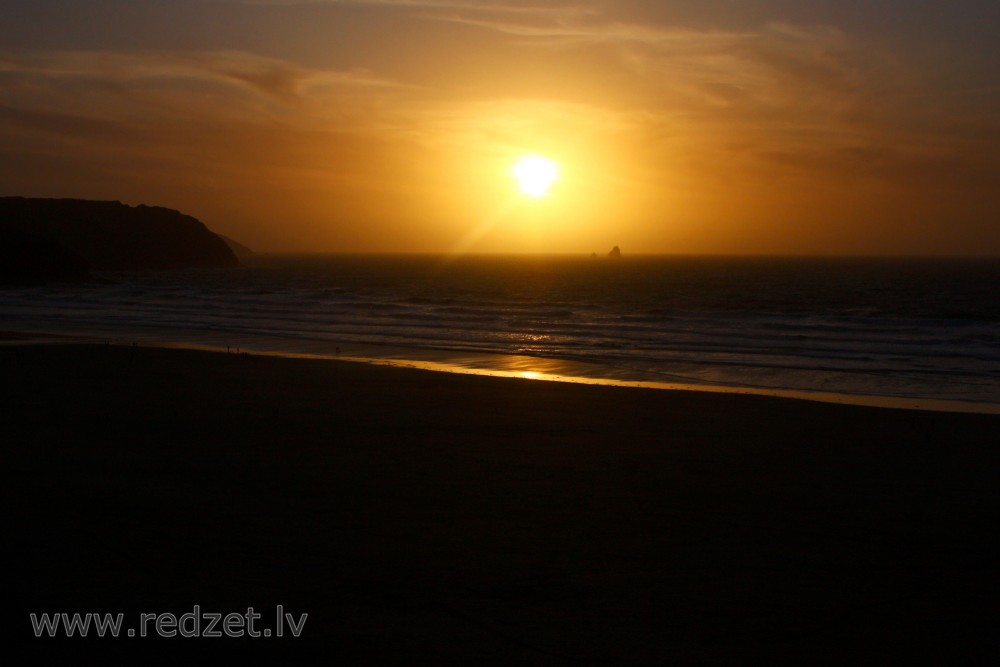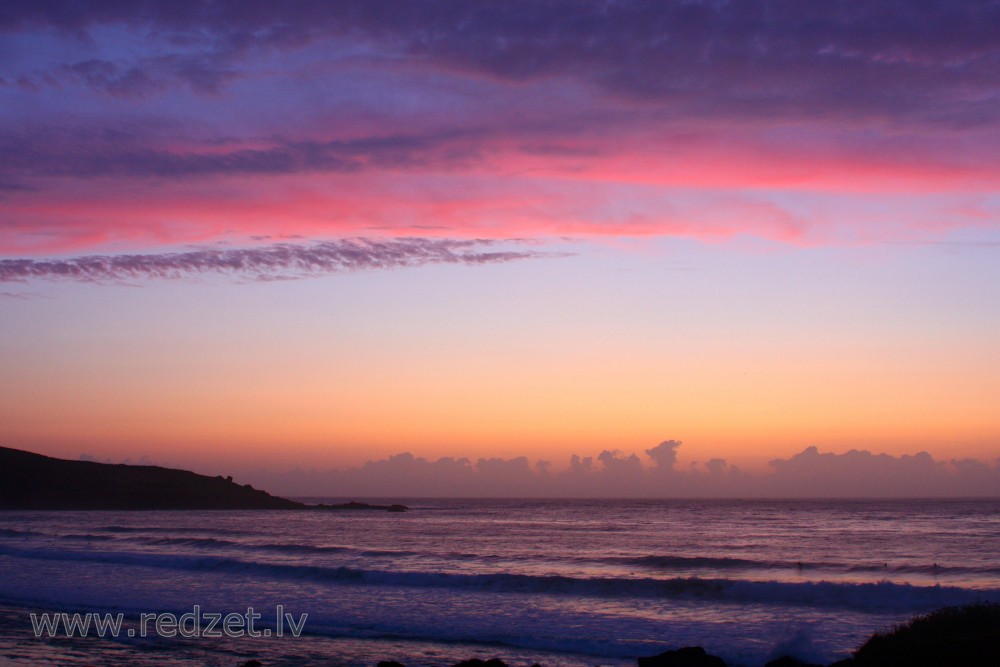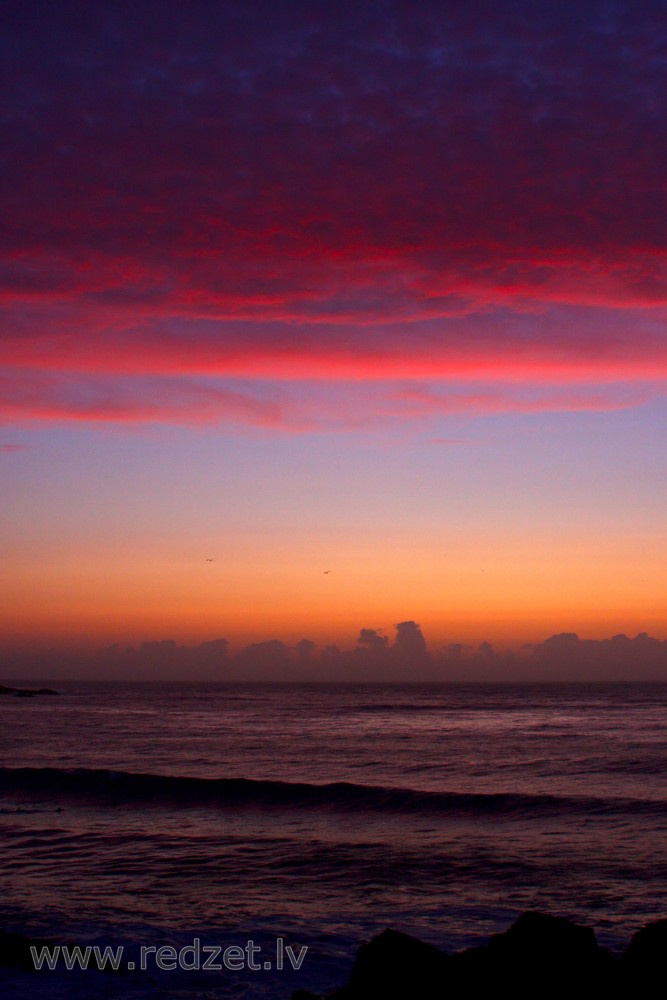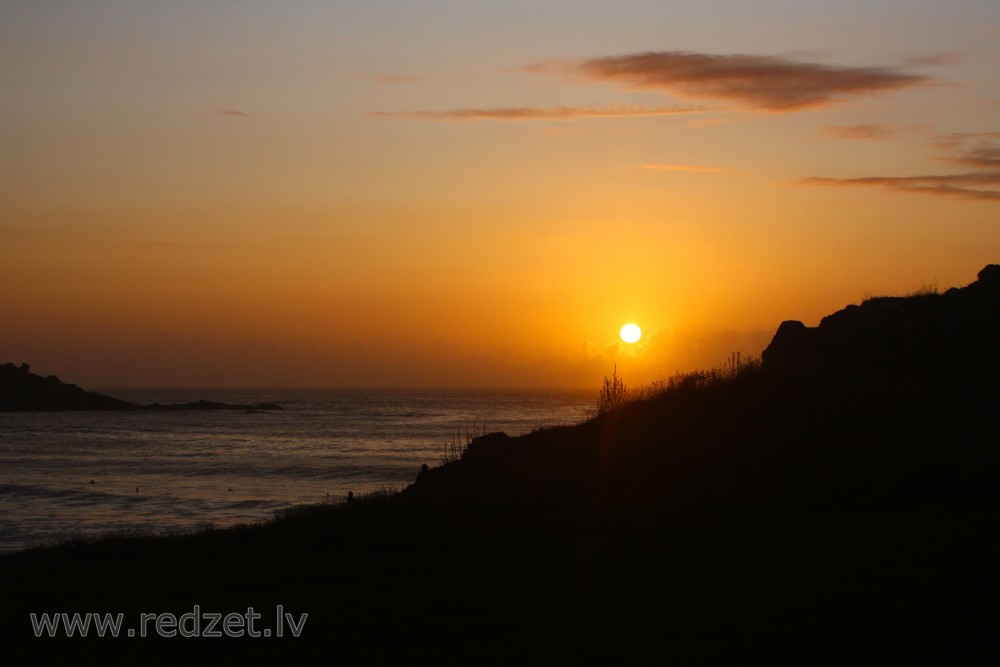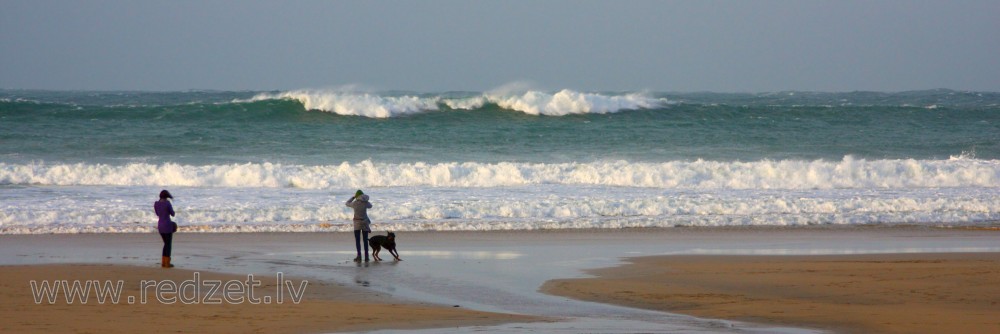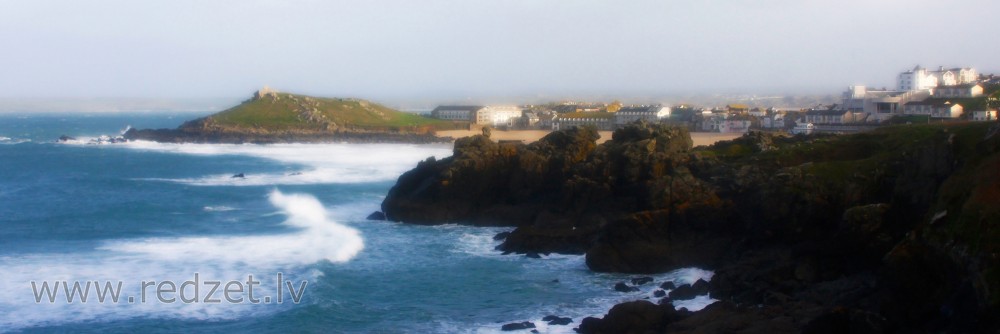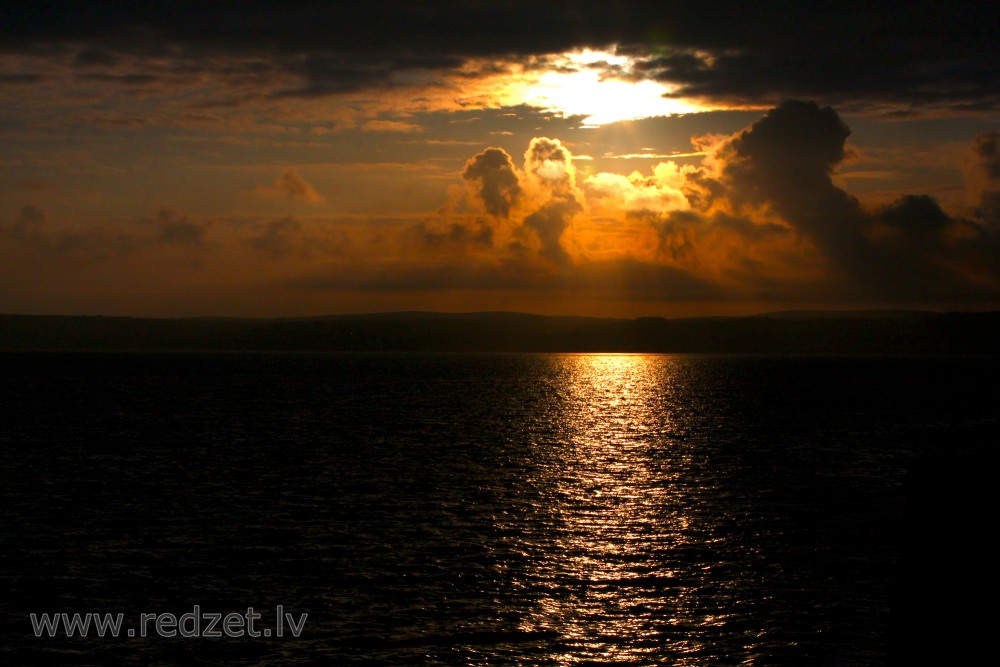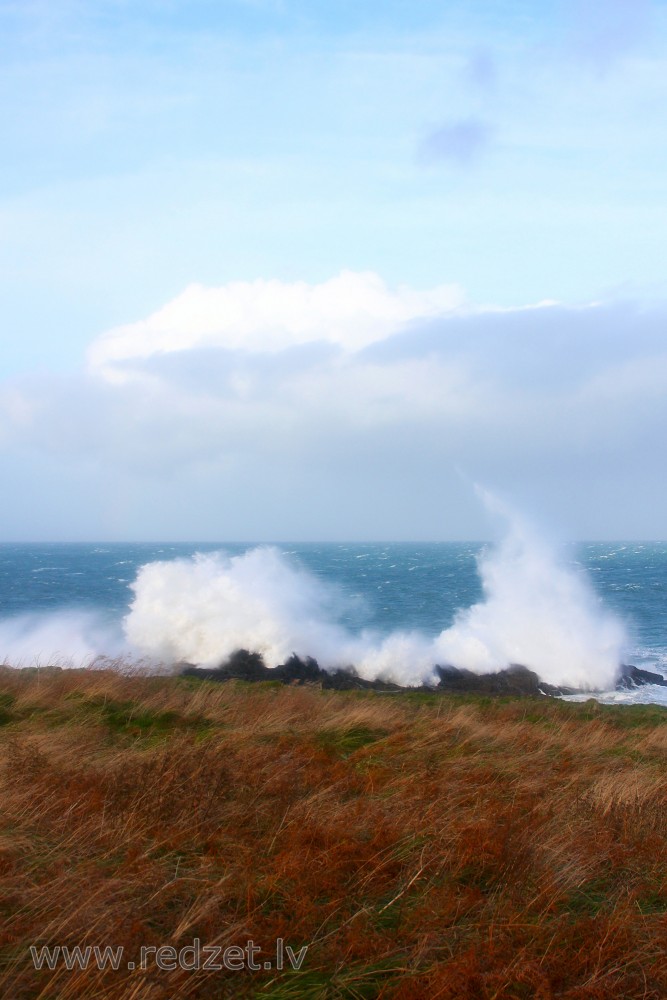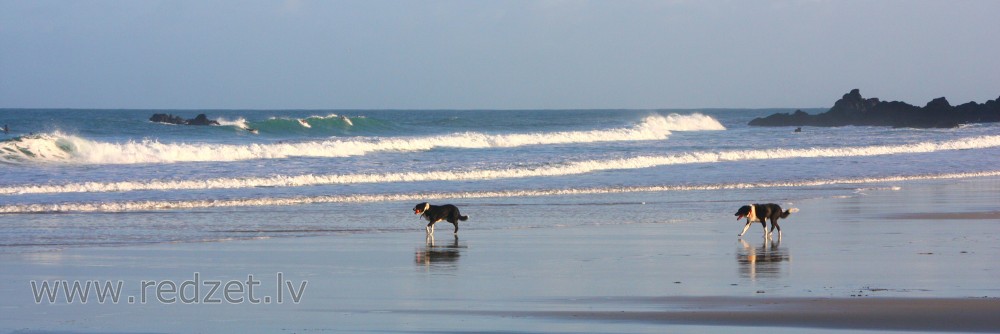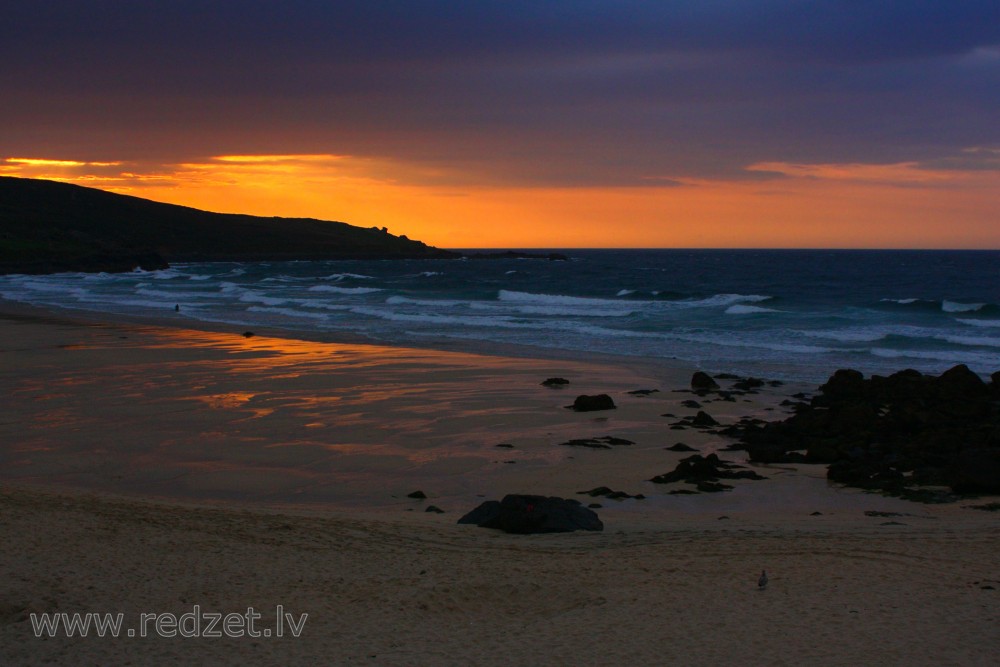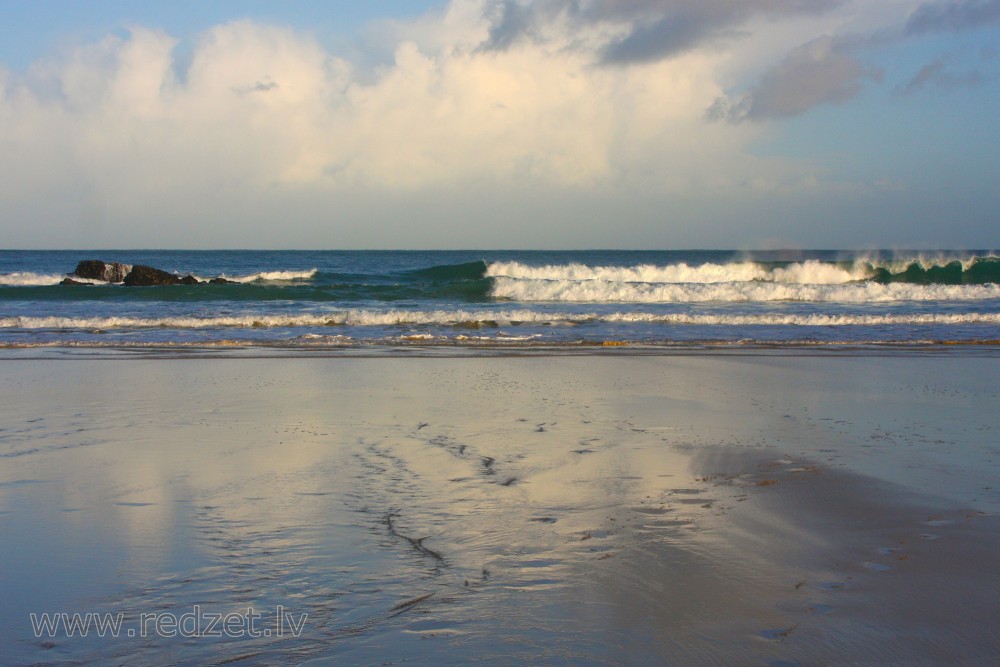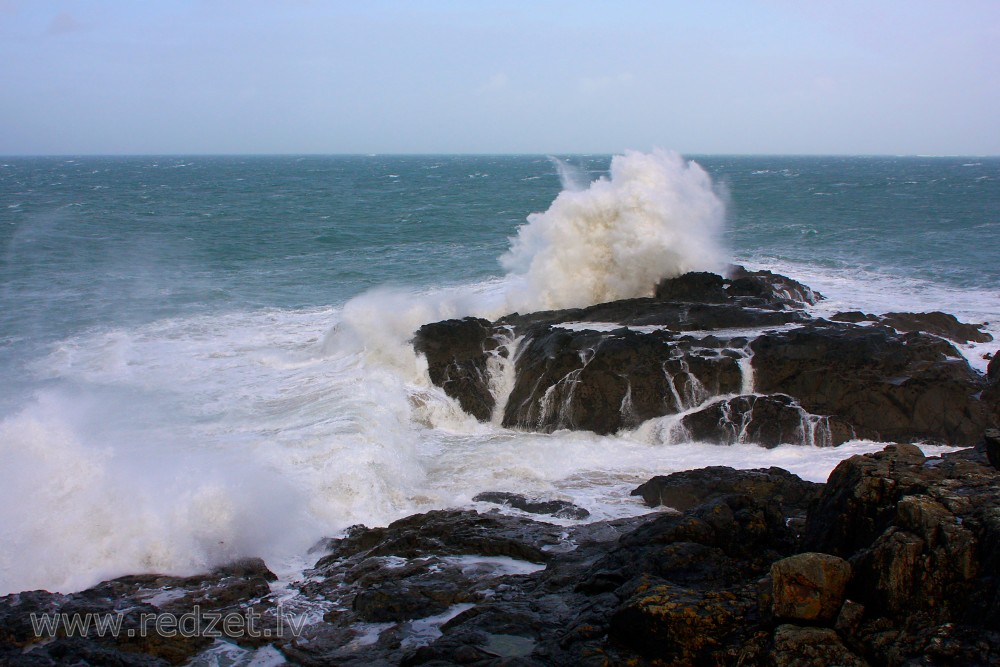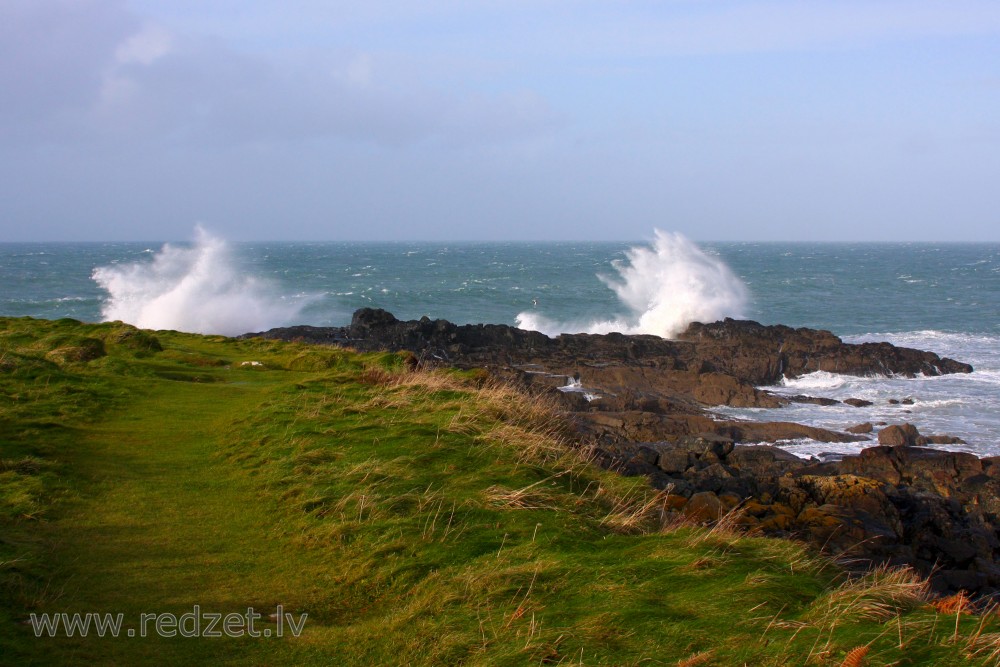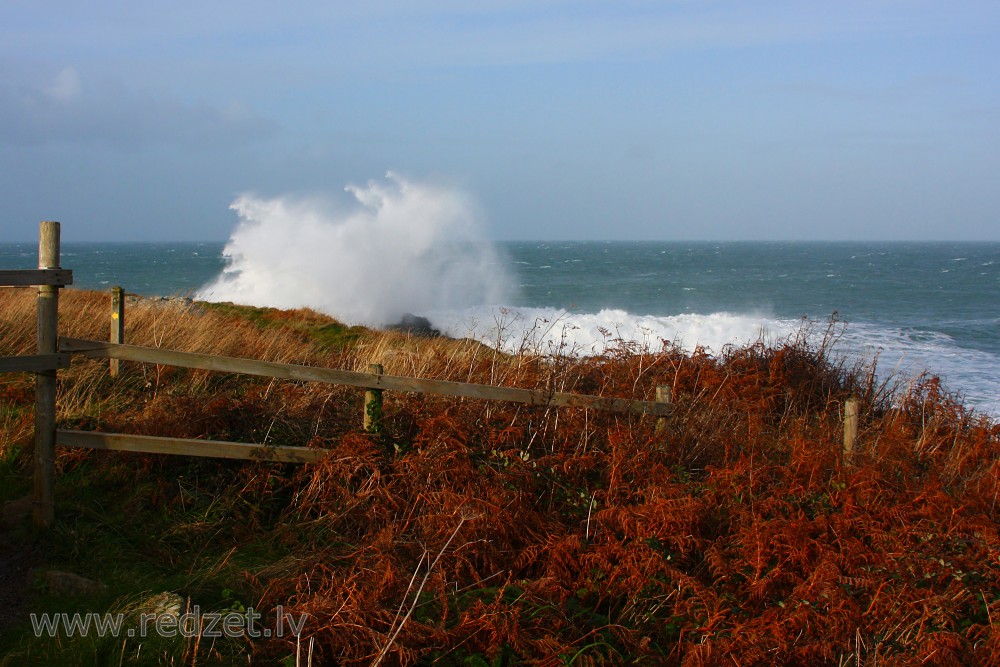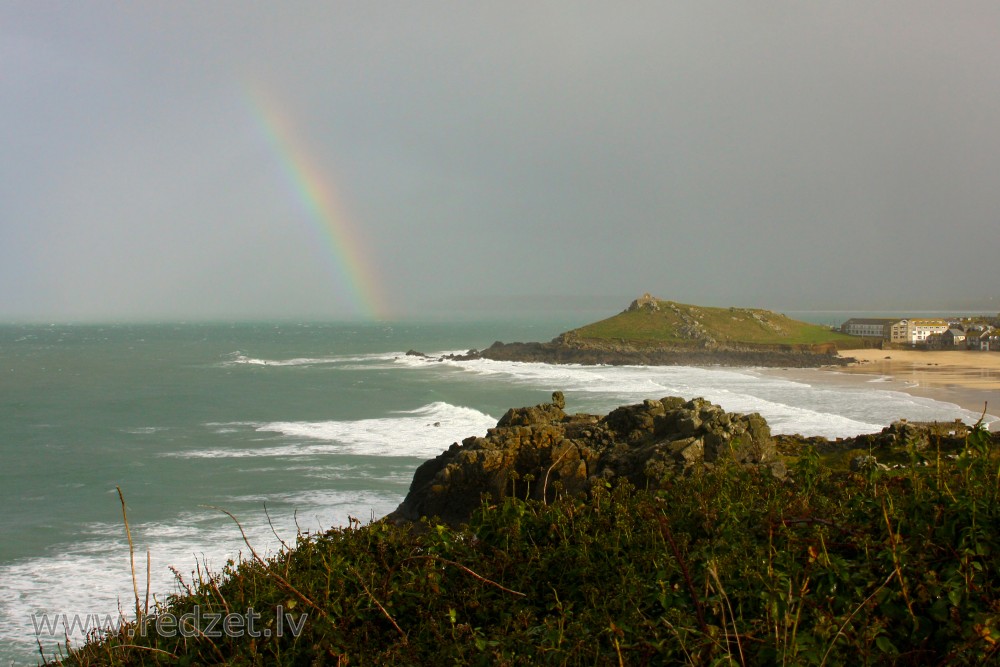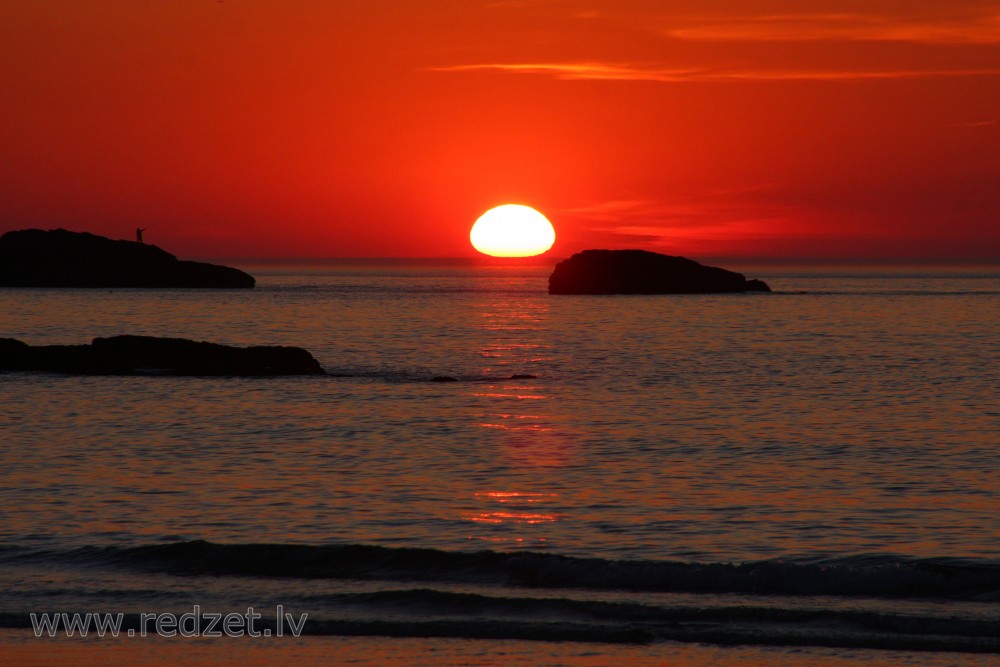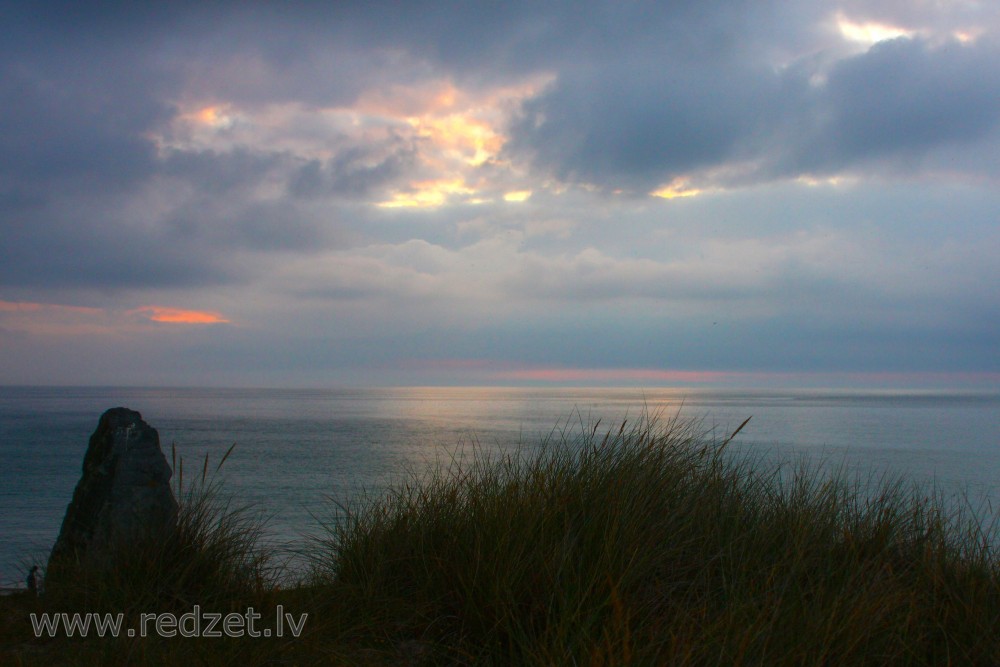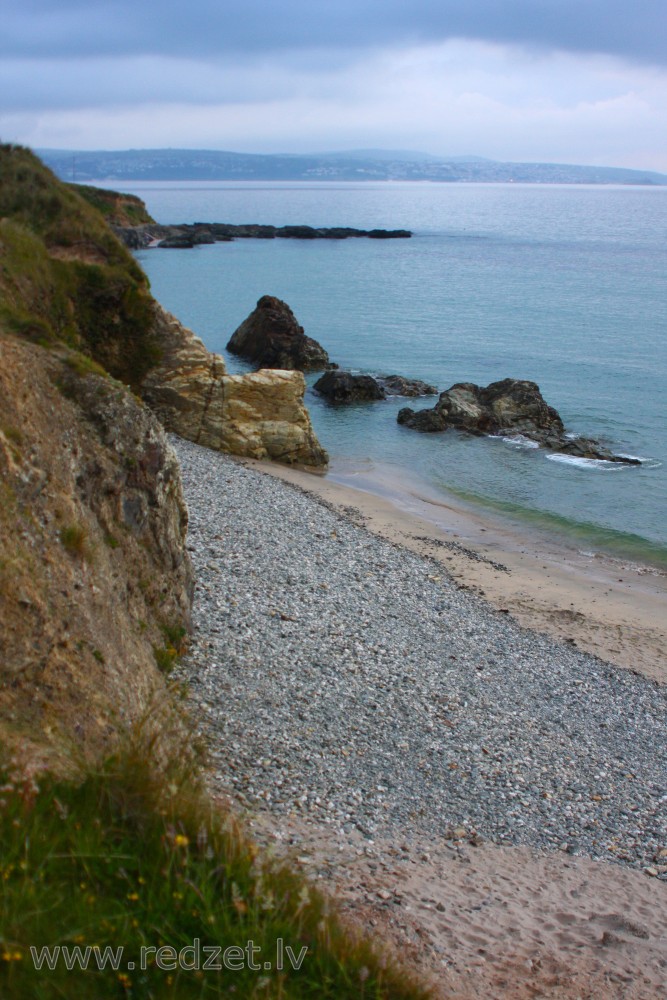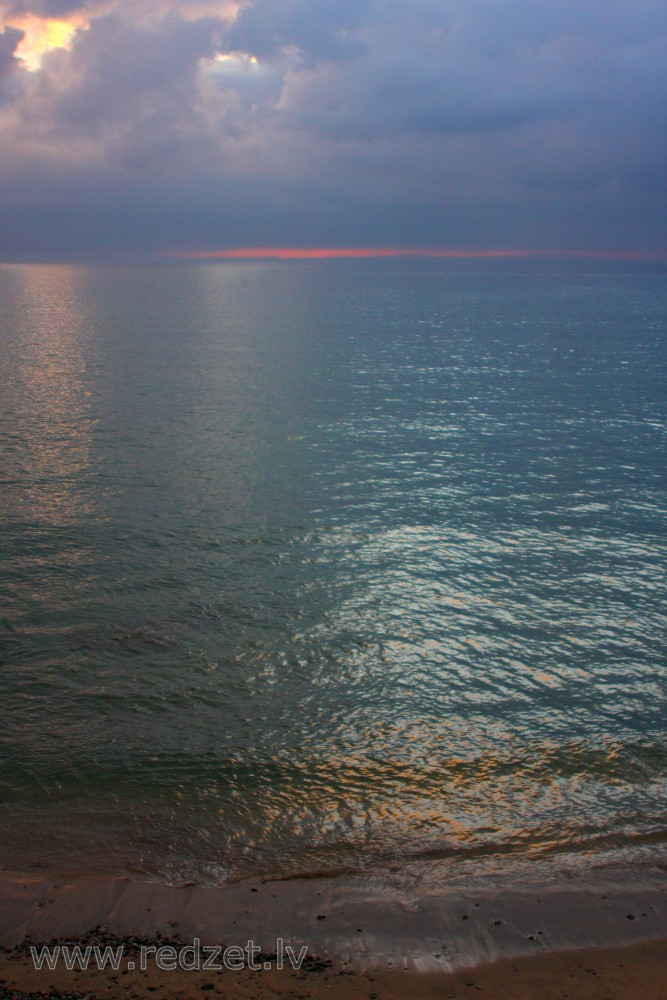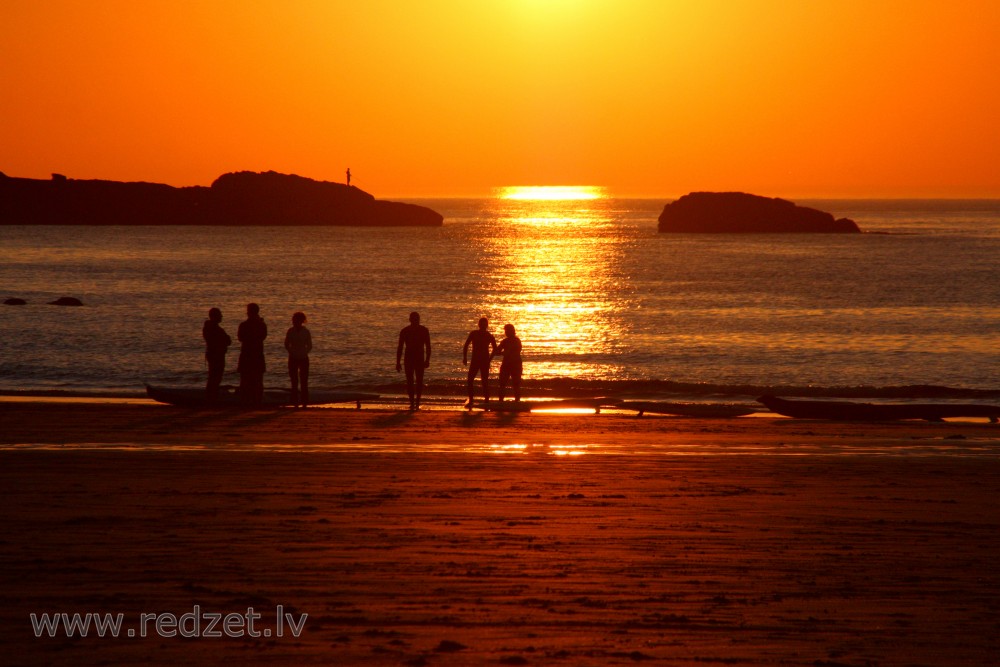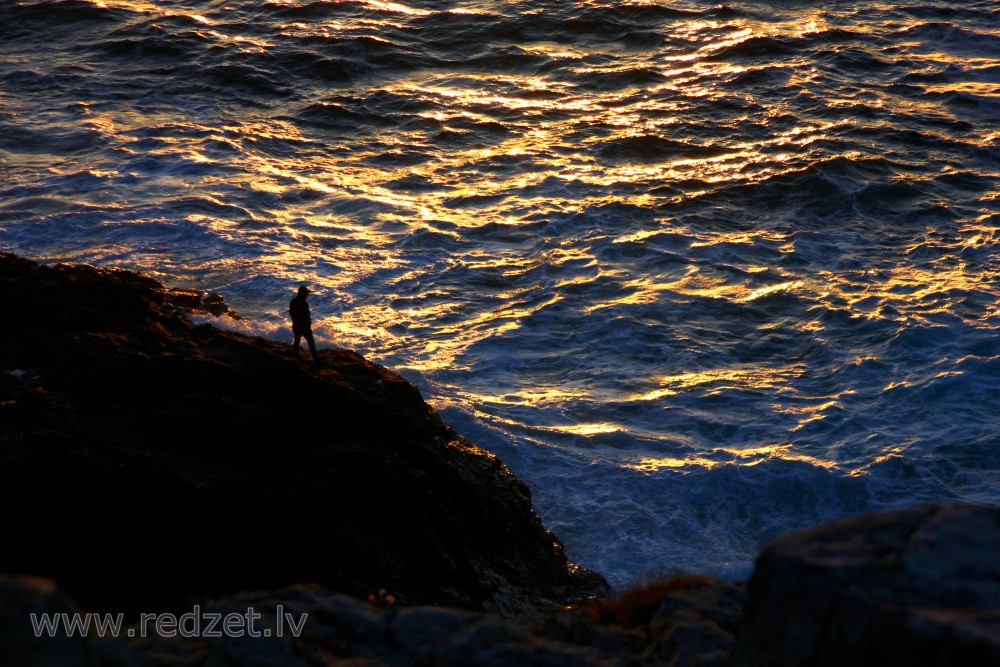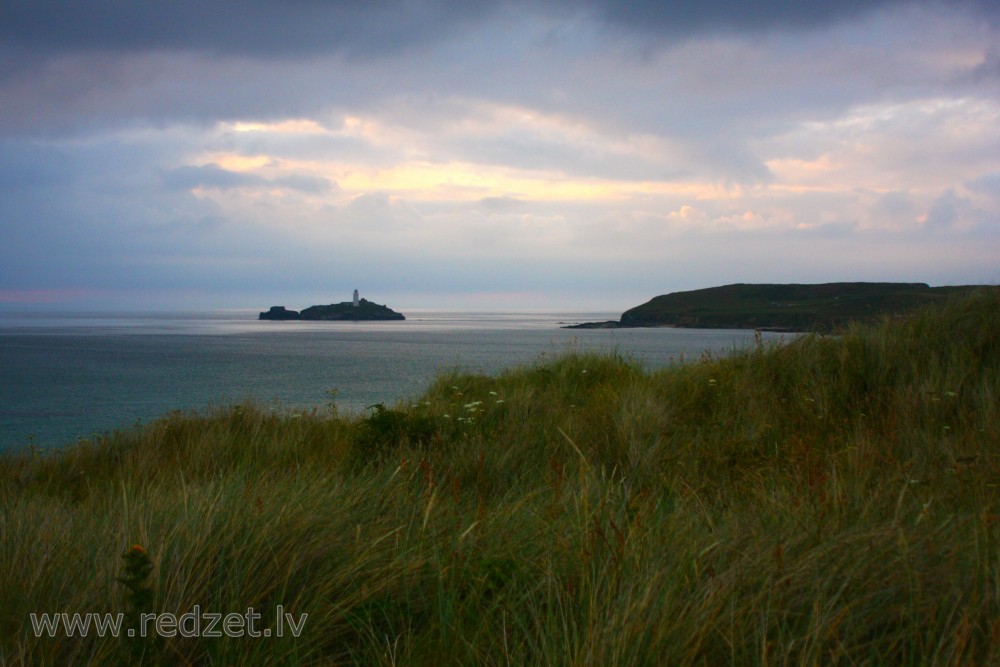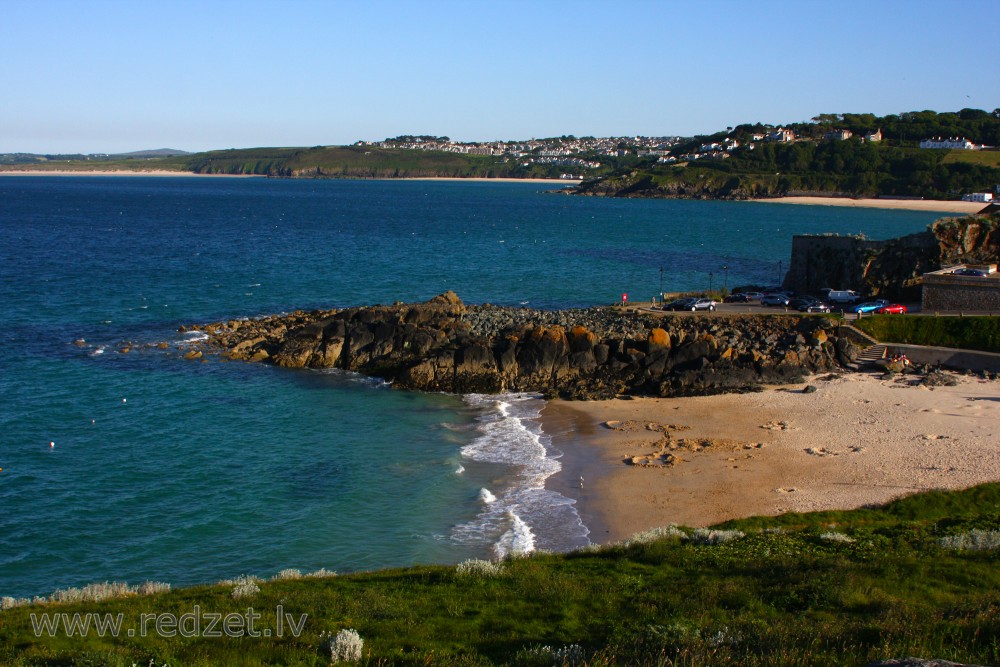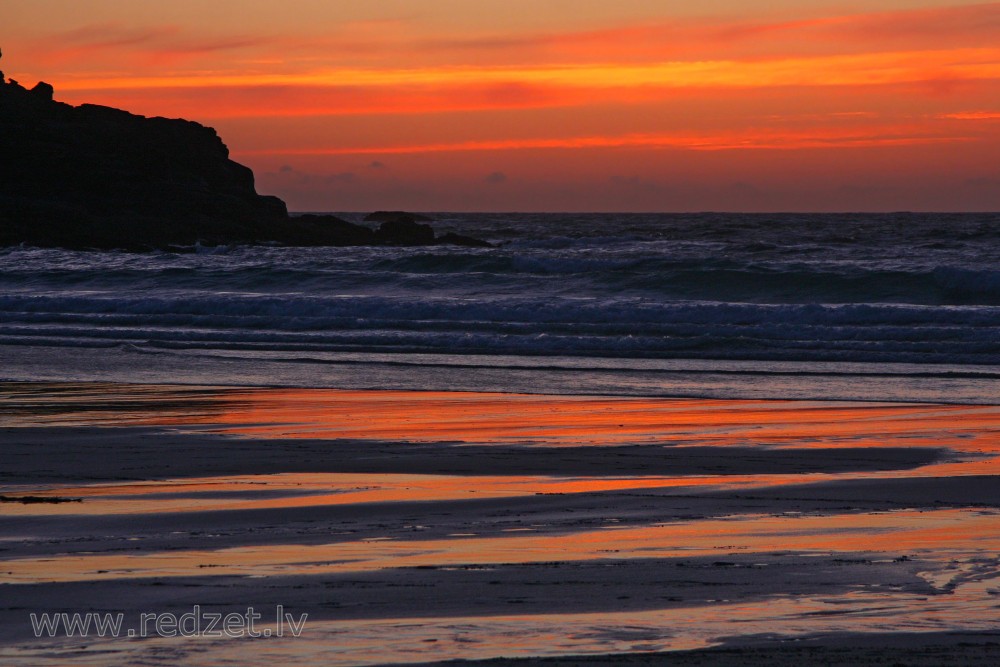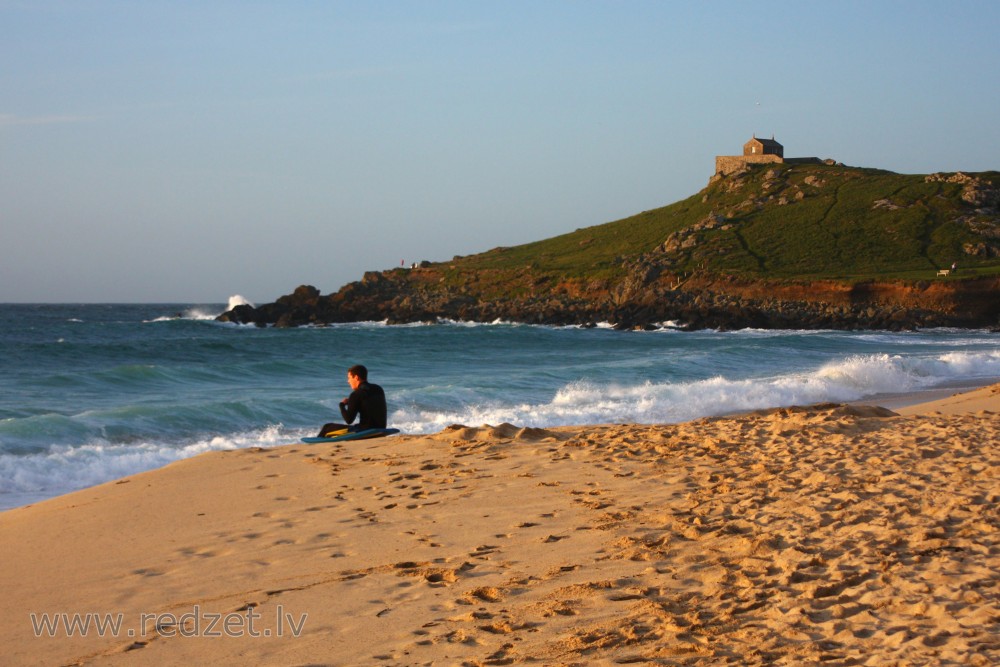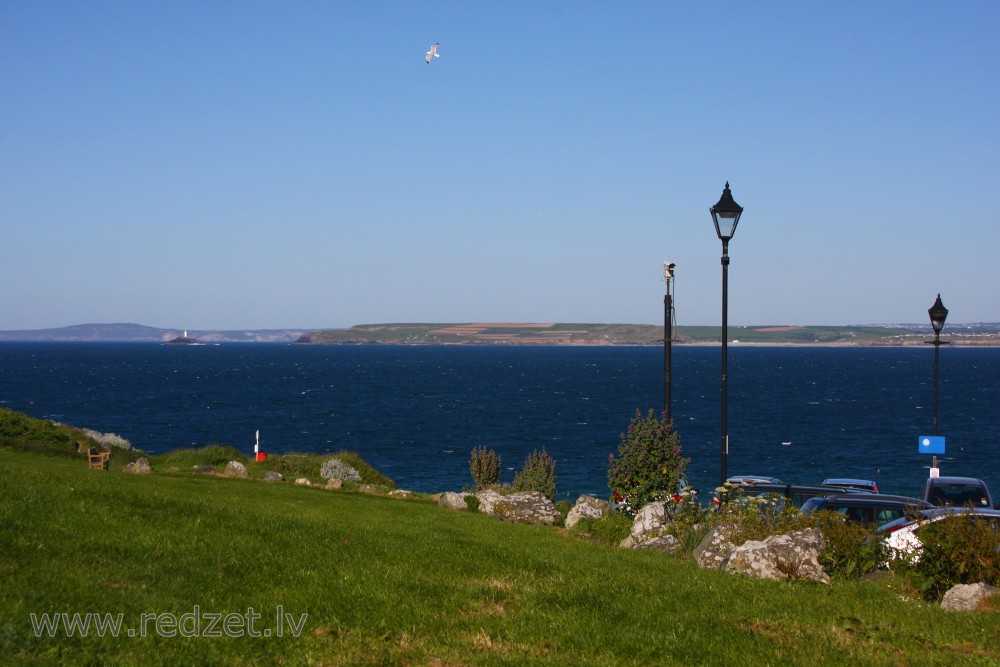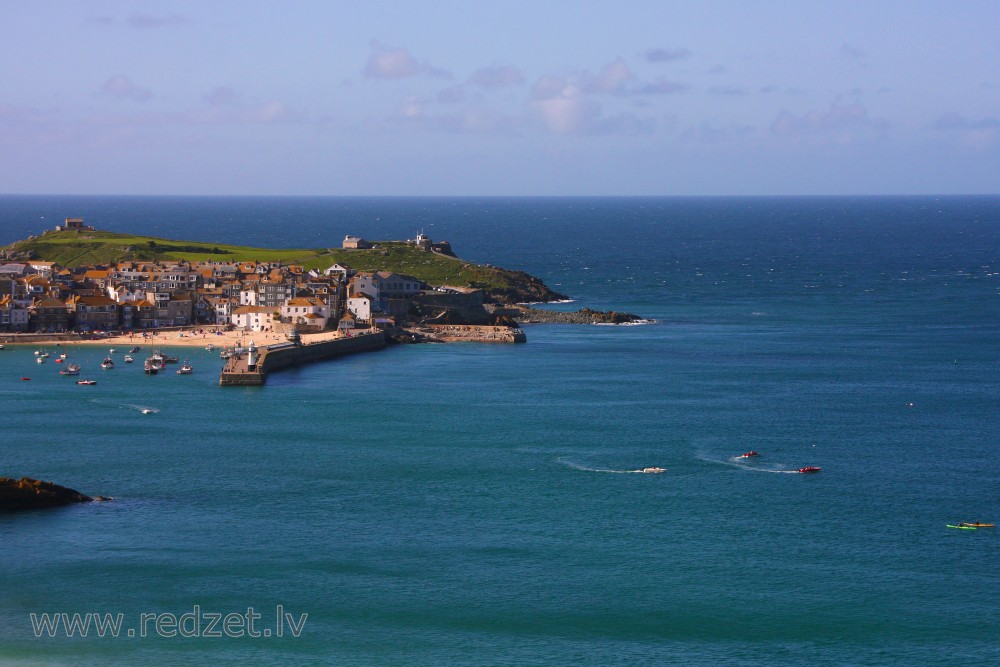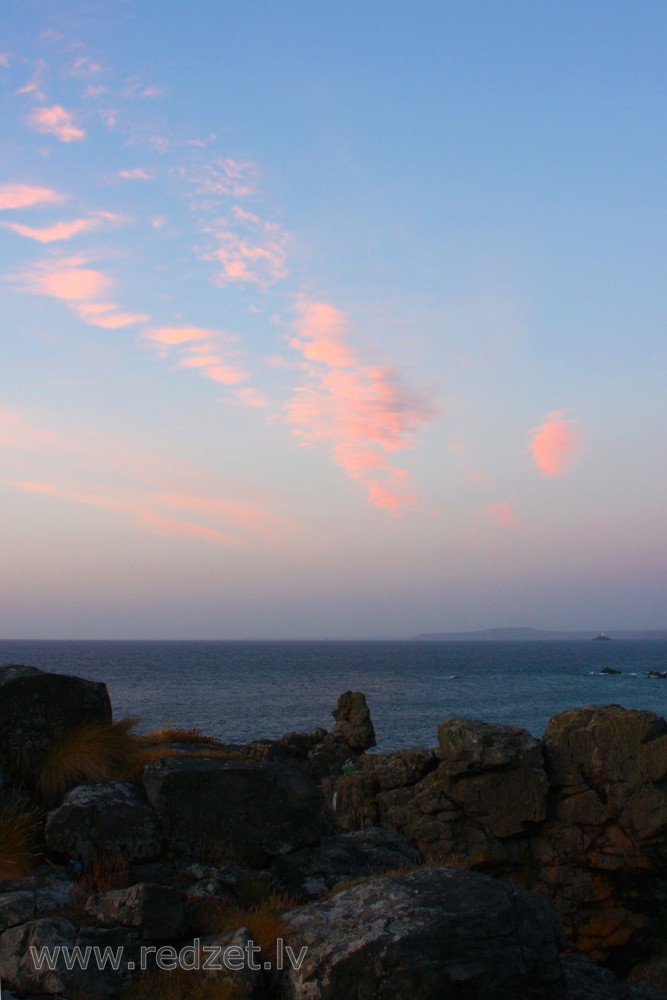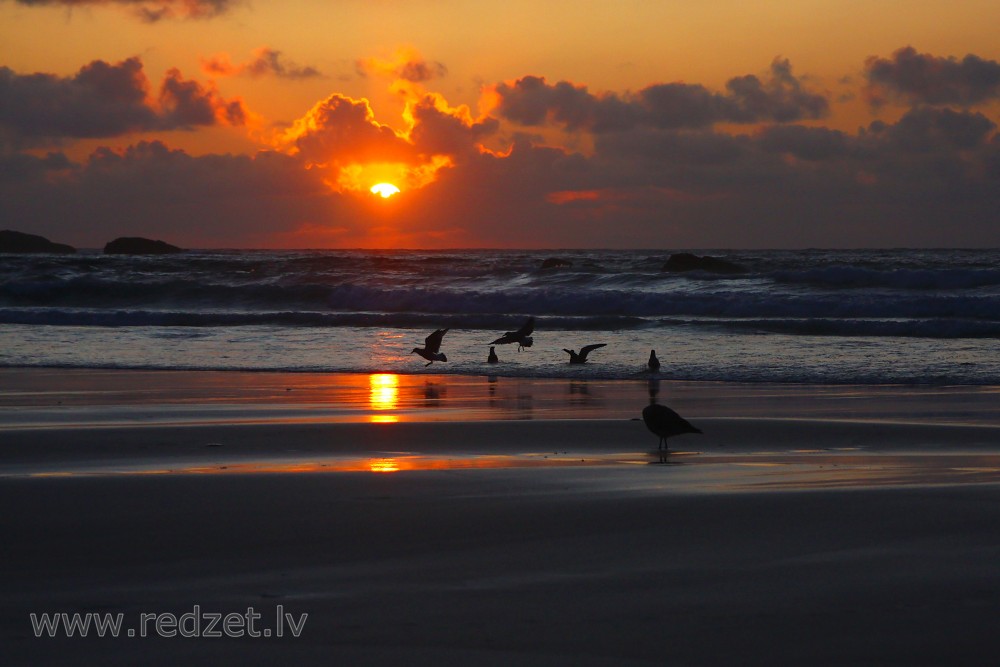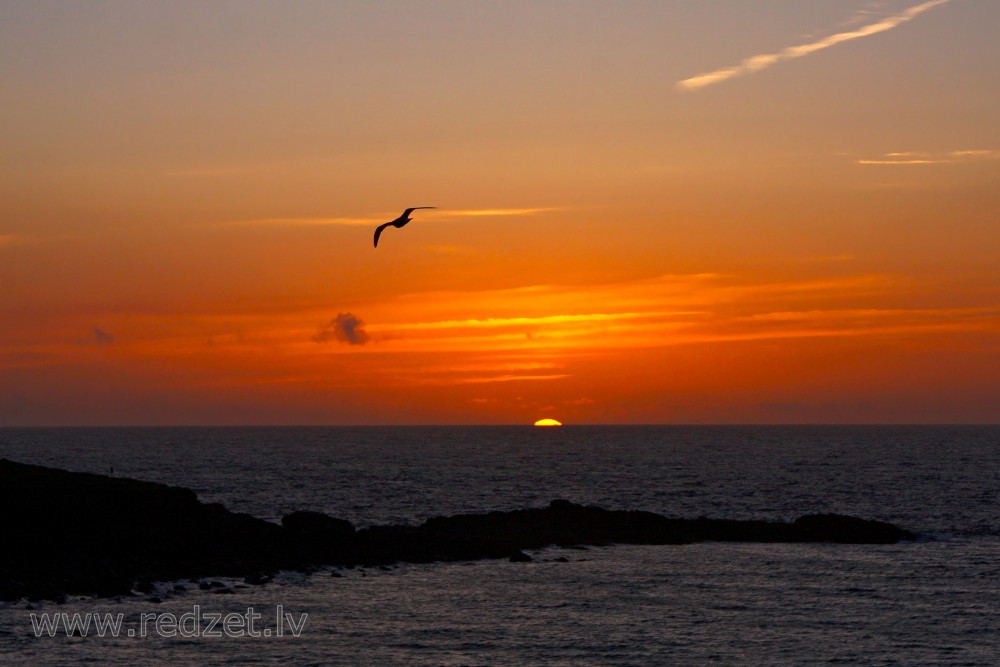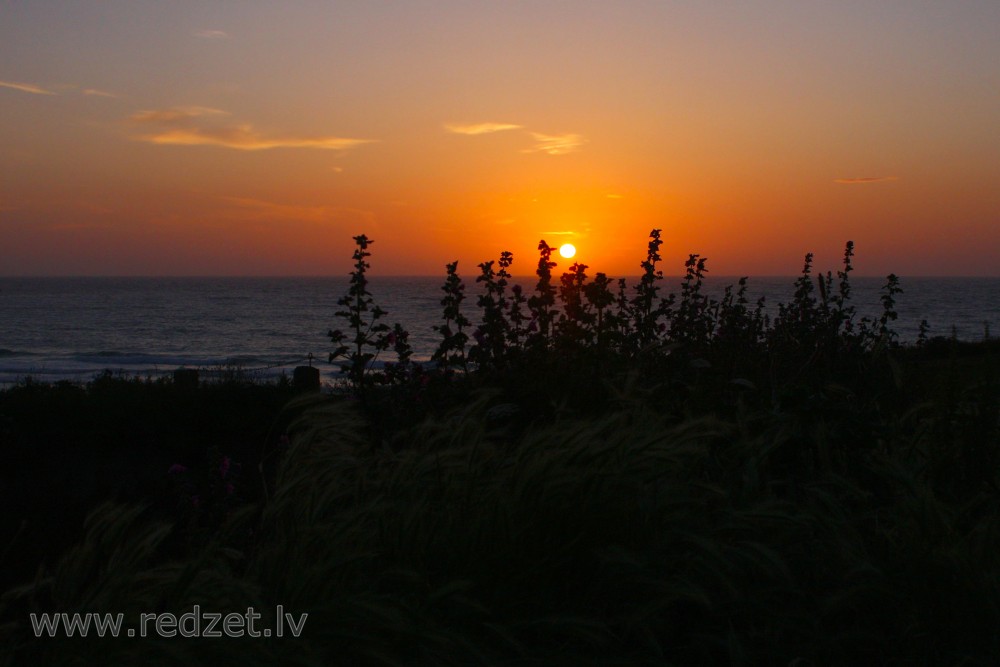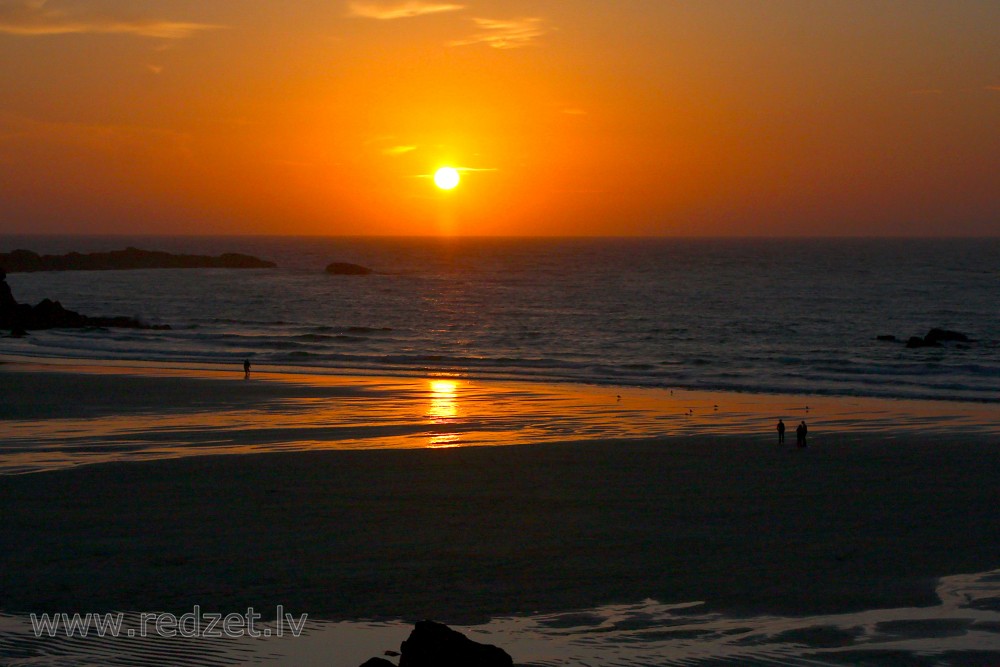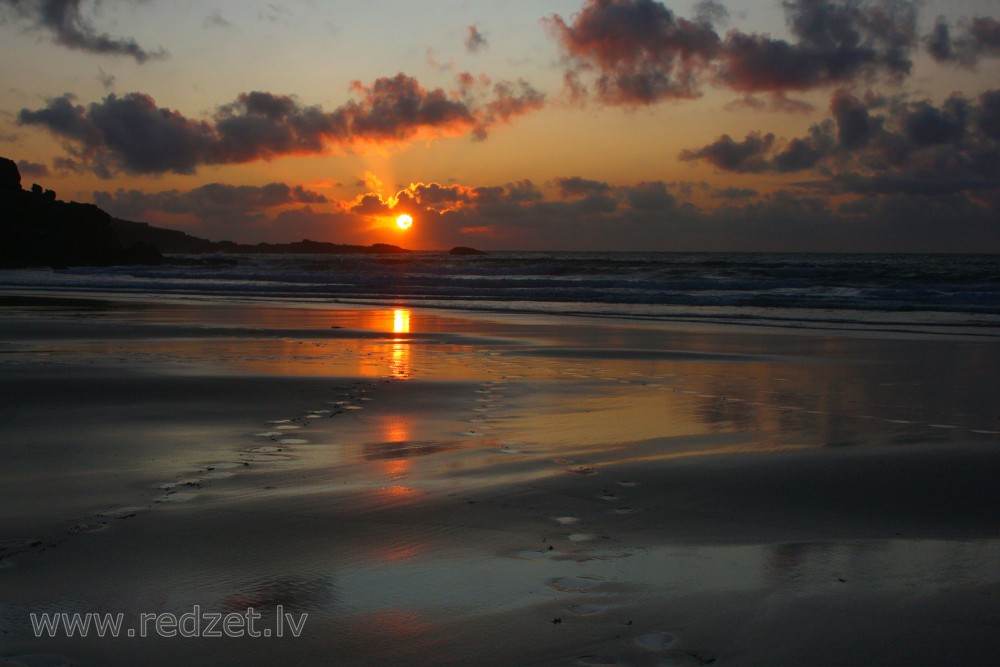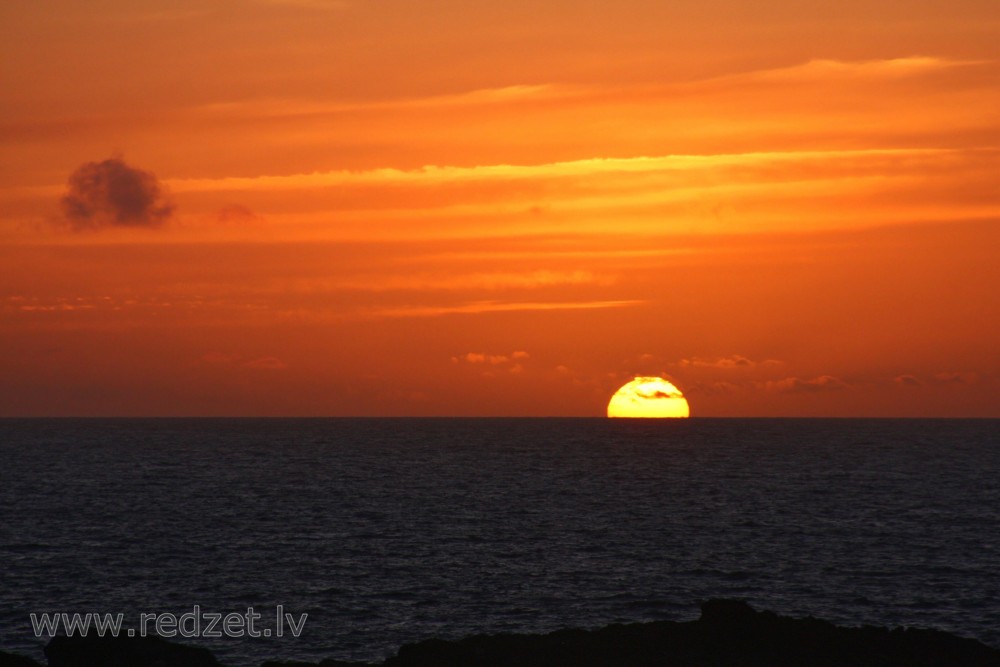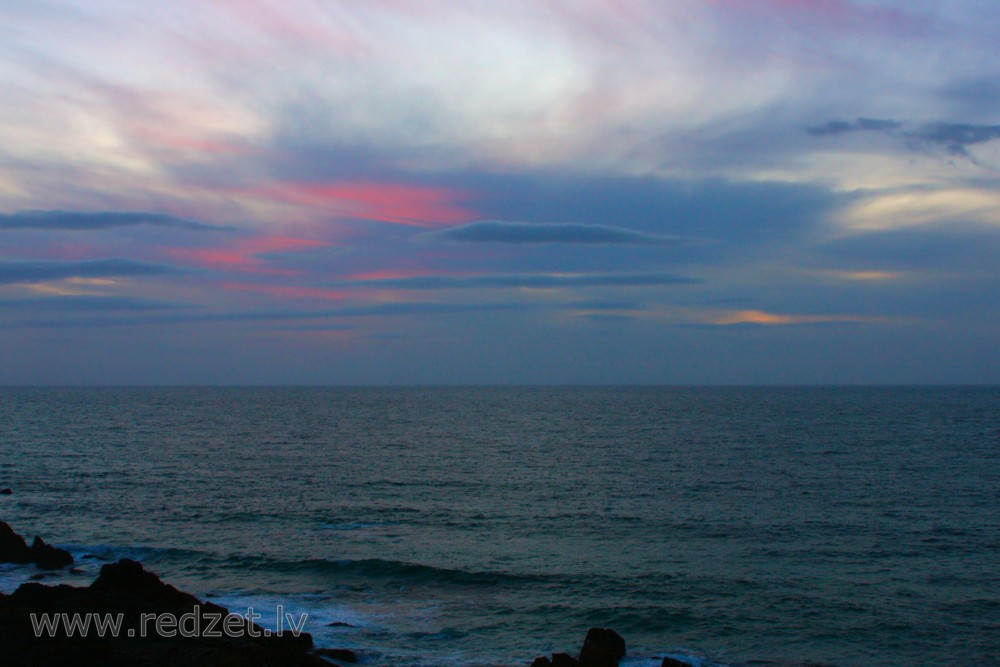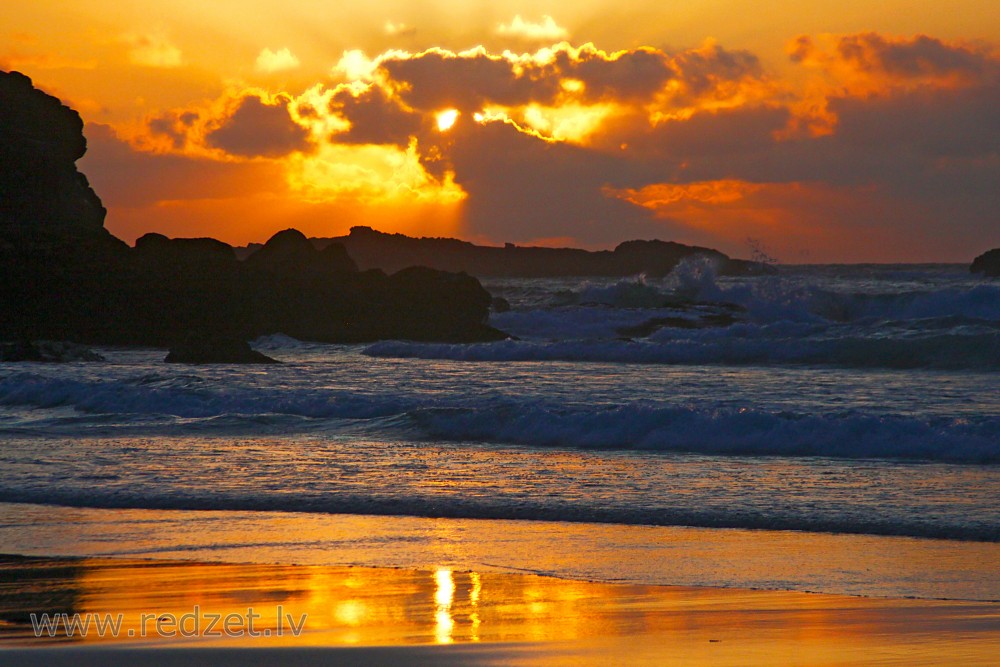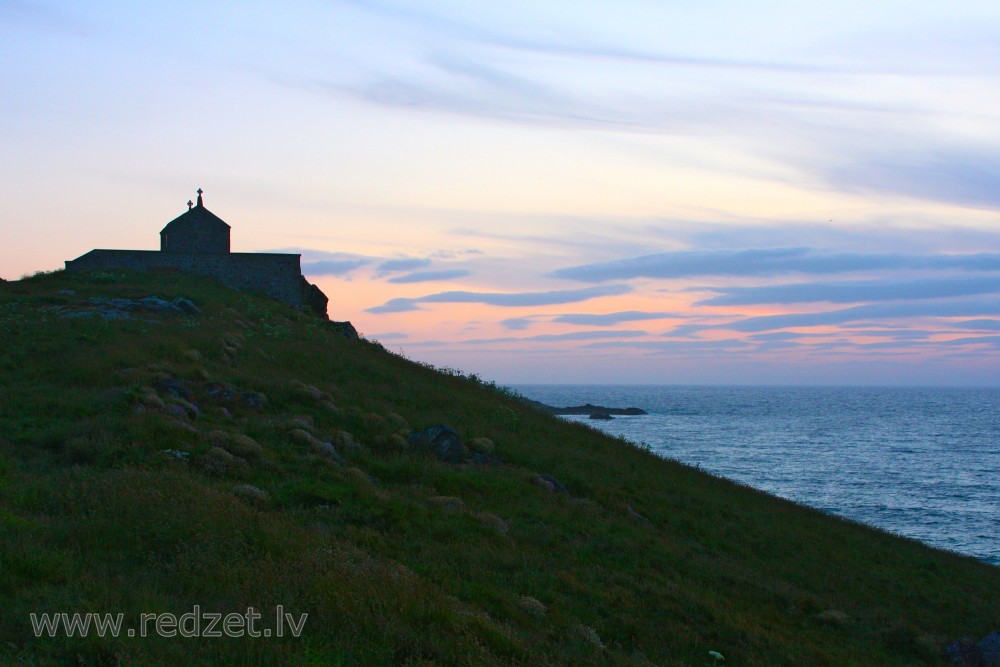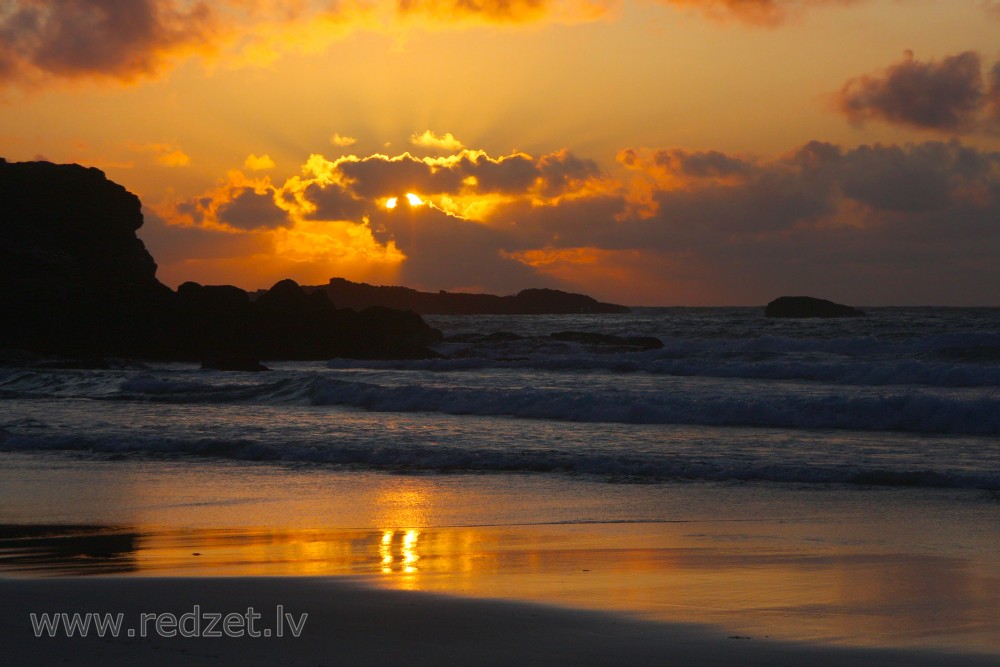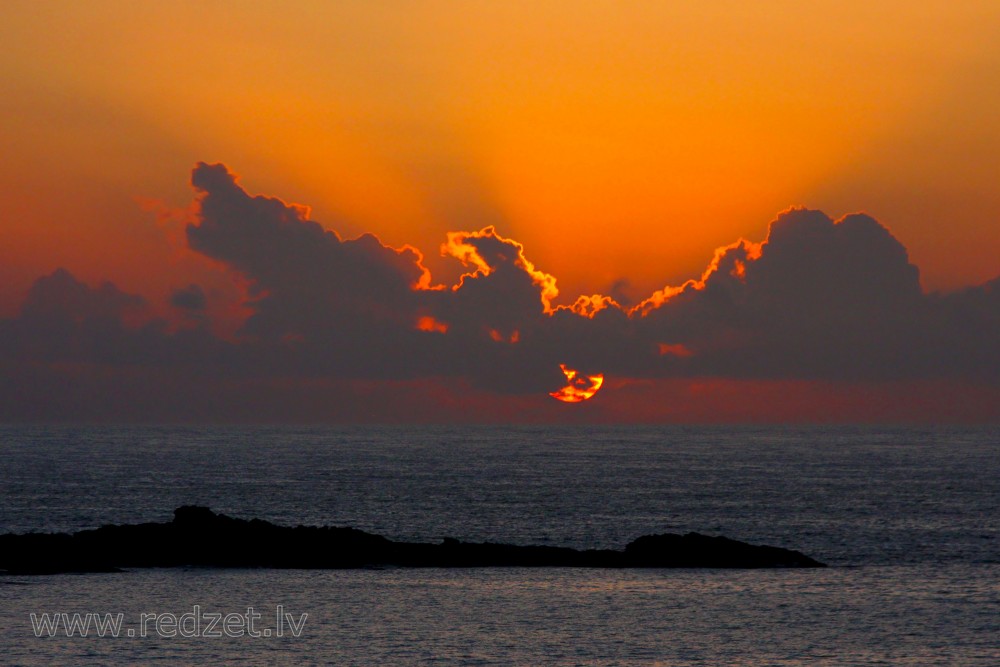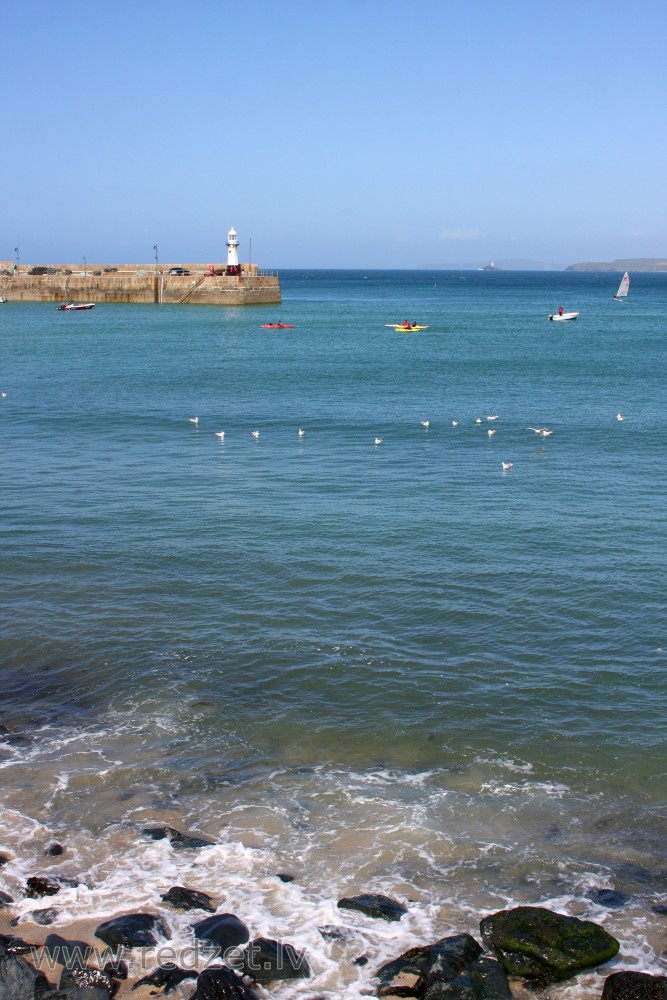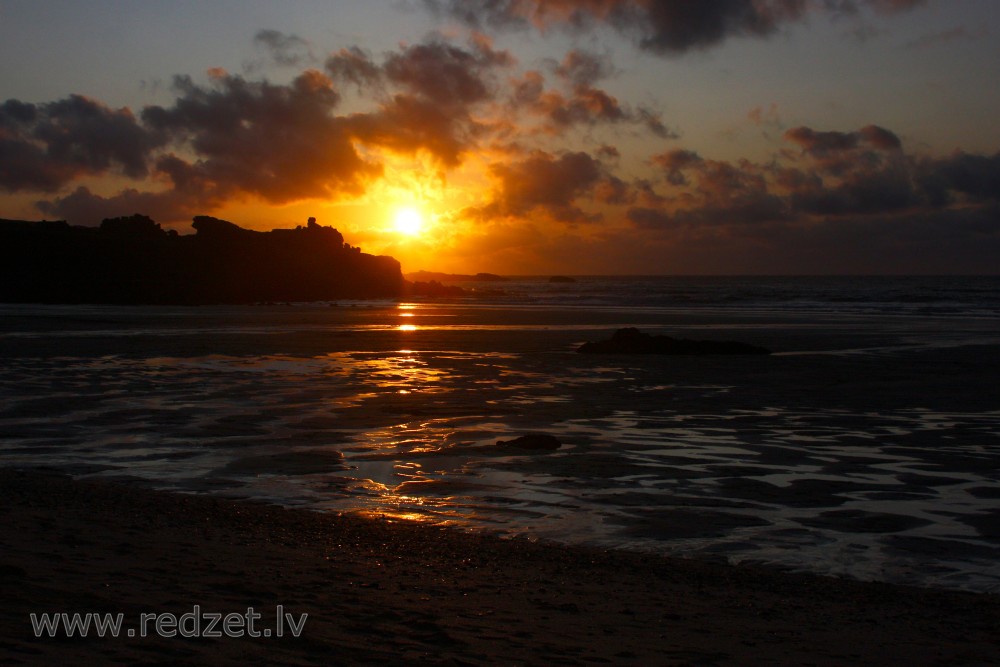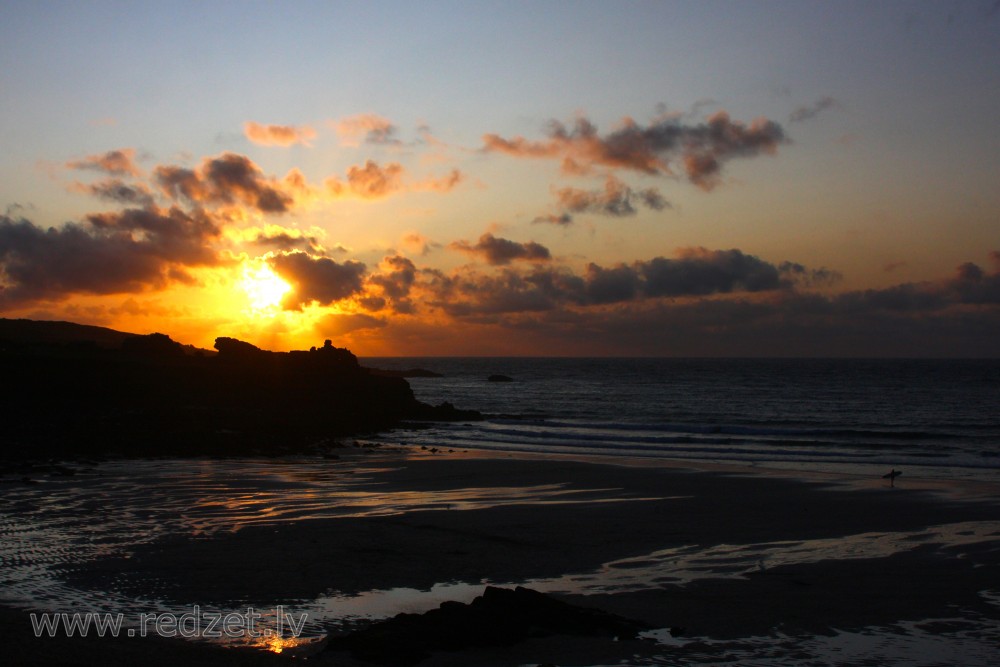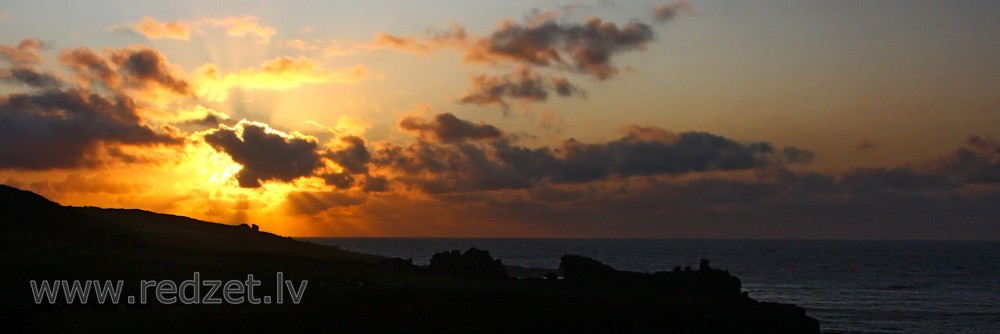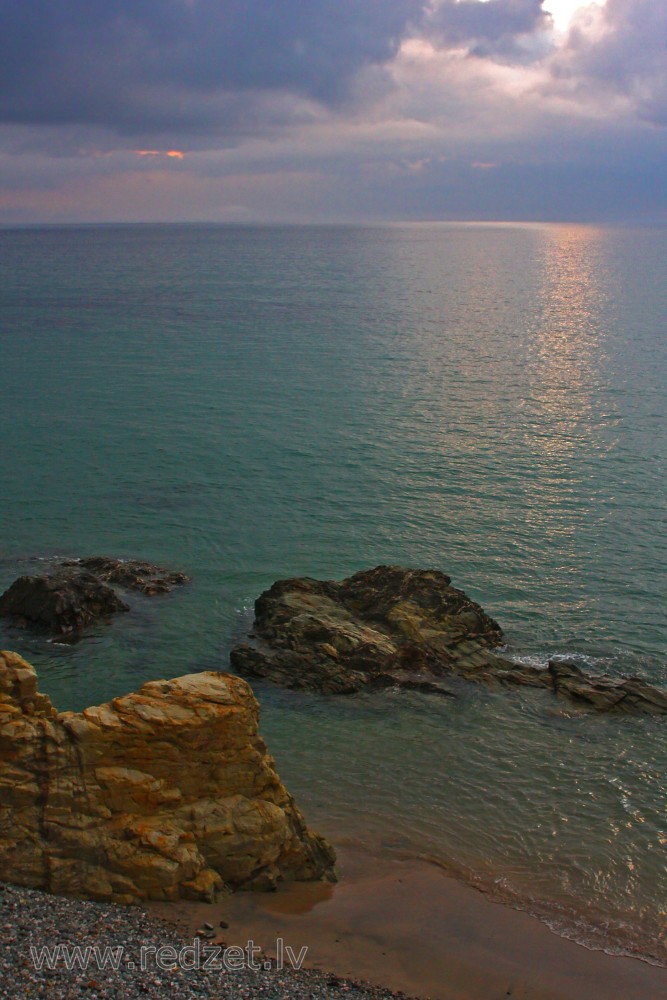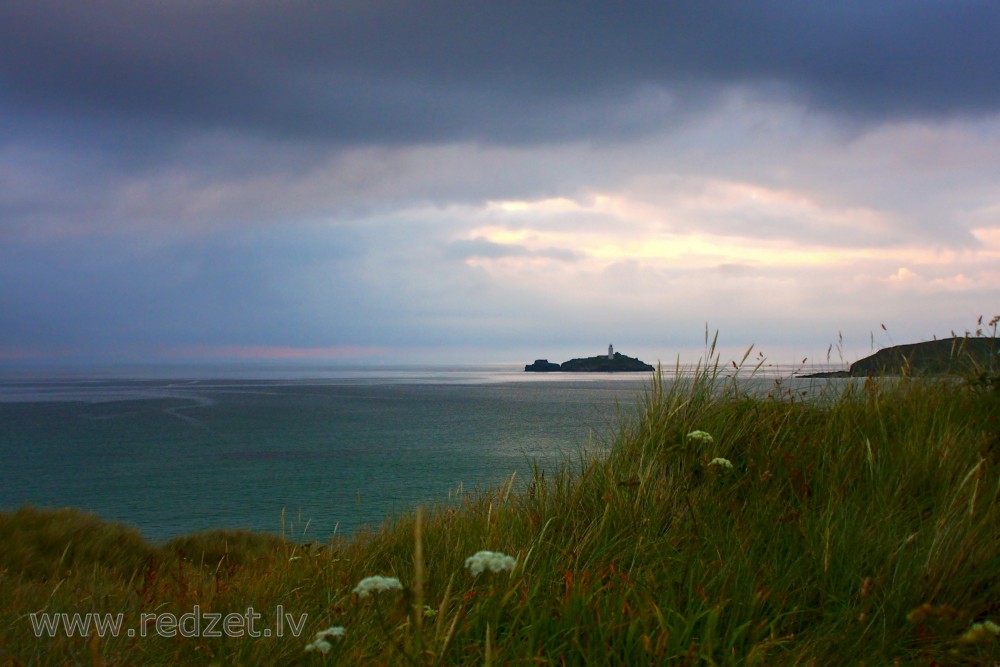United Kingdom
The United Kingdom, officially the United Kingdom of Great Britain and Northern Ireland but more commonly known as the UK or Britain, is a sovereign country lying off the north-western coast of the European mainland. The United Kingdom includes the island of Great Britain, the north-eastern part of the island of Ireland and many smaller islands. Northern Ireland is the only part of the United Kingdom that shares a land border with another sovereign state—the Republic of Ireland. Apart from this land border, the United Kingdom is surrounded by the Atlantic Ocean, with the North Sea to the east, the English Channel to the south and the Celtic Sea to the south-west, giving it the 12th-longest coastline in the world. The Irish Sea lies between Great Britain and Ireland. With an area of 242,500 square kilometres (93,600 sq mi), the United Kingdom is the 78th-largest sovereign state in the world. It is also the 22nd-most populous country, with an estimated 66.0 million inhabitants in 2017.
The UK is a unitary parliamentary democracy and constitutional monarchy. The current monarch is Queen Elizabeth II, who has reigned since 1952, making her the longest-serving current head of state. The United Kingdom's capital and largest city is London, a global city and financial centre with an urban area population of 10.3 million. Other major urban areas in the UK include Manchester, Birmingham, Leeds, Glasgow, Liverpool, and Newcastle.
The United Kingdom consists of four constituent countries: England, Scotland, Wales, and Northern Ireland. Their capitals are London, Edinburgh, Cardiff, and Belfast respectively. Apart from England, the countries have their own devolved governments, each with varying powers. The nearby Isle of Man, Bailiwick of Guernsey and Bailiwick of Jersey are not part of the UK, being Crown dependencies with the British Government responsible for defence and international representation. The medieval conquest and subsequent annexation of Wales by the Kingdom of England, followed by the union between England and Scotland in 1707 to form the Kingdom of Great Britain, and the union in 1801 of Great Britain with the Kingdom of Ireland created the United Kingdom of Great Britain and Ireland. Five-sixths of Ireland seceded from the UK in 1922, leaving the present formulation of the United Kingdom of Great Britain and Northern Ireland. There are fourteen British Overseas Territories, the remnants of the British Empire which, at its height in the 1920s, encompassed almost a quarter of the world's land mass and was the largest empire in history. British influence can be observed in the language, culture and political systems of many of its former colonies.
The United Kingdom is a developed country and has the world's fifth-largest economy by nominal GDP and ninth-largest economy by purchasing power parity. It has a high-income economy and has a very high Human Development Index rating, ranking 14th in the world. It was the world's first industrialised country and the world's foremost power during the 19th and early 20th centuries. The UK remains a great power, with considerable economic, cultural, military, scientific and political influence internationally. It is a recognised nuclear weapons state and is sixth in military expenditure in the world. It has been a permanent member of the United Nations Security Council since its first session in 1946. It has been a leading member state of the European Union (EU) and its predecessor, the European Economic Community (EEC), since 1973; however, a referendum in 2016 resulted in 51.9% of UK voters favouring leaving the European Union, and the country's exit is being negotiated. The United Kingdom is also a member of the Commonwealth of Nations, the Council of Europe, the G7, the G20, NATO, the Organisation for Economic Co-operation and Development (OECD), Interpol and the World Trade Organization (WTO).
Geography
The total area of the United Kingdom is approximately 243,610 square kilometres (94,060 sq mi). The country occupies the major part of the British Isles archipelago and includes the island of Great Britain, the north-eastern one-sixth of the island of Ireland and some smaller surrounding islands. It lies between the North Atlantic Ocean and the North Sea with the south-east coast coming within 22 miles (35 km) of the coast of northern France, from which it is separated by the English Channel. In 1993 10% of the UK was forested, 46% used for pastures and 25% cultivated for agriculture. The Royal Greenwich Observatory in London was chosen as the defining point of the Prime Meridian in Washington in 1884, though it no longer is.
The United Kingdom lies between latitudes 49° and 61° N, and longitudes 9° W and 2° E. Northern Ireland shares a 224-mile (360 km) land boundary with the Republic of Ireland. The coastline of Great Britain is 11,073 miles (17,820 km) long. It is connected to continental Europe by the Channel Tunnel, which at 31 miles (50 km) (24 miles (38 km) underwater) is the longest underwater tunnel in the world.
England accounts for just over half (53%) of the total area of the UK, covering 130,395 square kilometres (50,350 sq mi). Most of the country consists of lowland terrain, with mountainous terrain north-west of the Tees-Exe line; including the Cumbrian Mountains of the Lake District, the Pennines, Exmoor and Dartmoor. The main rivers and estuaries are the Thames, Severn and the Humber. England's highest mountain is Scafell Pike (978 metres (3,209 ft)) in the Lake District.
Scotland accounts for just under a third (32%) of the total area of the UK, covering 78,772 square kilometres (30,410 sq mi) and including nearly eight hundred islands, predominantly west and north of the mainland; notably the Hebrides, Orkney Islands and Shetland Islands. Scotland is the most mountainous country in the UK and its topography is distinguished by the Highland Boundary Fault—a geological rock fracture—which traverses Scotland from Arran in the west to Stonehaven in the east. The fault separates two distinctively different regions; namely the Highlands to the north and west and the lowlands to the south and east. The more rugged Highland region contains the majority of Scotland's mountainous land, including Ben Nevis which at 1,345 metres (4,413 ft) is the highest point in the British Isles. Lowland areas—especially the narrow waist of land between the Firth of Clyde and the Firth of Forth known as the Central Belt—are flatter and home to most of the population including Glasgow, Scotland's largest city, and Edinburgh, its capital and political centre, although upland and mountainous terrain lies within the Southern Uplands.
Wales accounts for less than a tenth (9%) of the total area of the UK, covering 20,779 square kilometres (8,020 sq mi). Wales is mostly mountainous, though South Wales is less mountainous than North and mid Wales. The main population and industrial areas are in South Wales, consisting of the coastal cities of Cardiff, Swansea and Newport, and the South Wales Valleys to their north. The highest mountains in Wales are in Snowdonia and include Snowdon (Welsh: Yr Wyddfa) which, at 1,085 metres (3,560 ft), is the highest peak in Wales. Wales has over 2,704 kilometres (1,680 miles) of coastline. Several islands lie off the Welsh mainland, the largest of which is Anglesey (Ynys Môn) in the north-west.
Northern Ireland, separated from Great Britain by the Irish Sea and North Channel, has an area of 14,160 square kilometres (5,470 sq mi) and is mostly hilly. It includes Lough Neagh which, at 388 square kilometres (150 sq mi), is the largest lake in the British Isles by area. The highest peak in Northern Ireland is Slieve Donard in the Mourne Mountains at 852 metres (2,795 ft).
Climate
The United Kingdom has a temperate climate, with plentiful rainfall all year round. The temperature varies with the seasons seldom dropping below −11 °C (12 °F) or rising above 35 °C (95 °F). The prevailing wind is from the south-west and bears frequent spells of mild and wet weather from the Atlantic Ocean, although the eastern parts are mostly sheltered from this wind since the majority of the rain falls over the western regions the eastern parts are therefore the driest. Atlantic currents, warmed by the Gulf Stream, bring mild winters; especially in the west where winters are wet and even more so over high ground. Summers are warmest in the south-east of England, being closest to the European mainland, and coolest in the north. Heavy snowfall can occur in winter and early spring on high ground, and occasionally settles to great depth away from the hills.
Administrative divisions
The geographical division of the United Kingdom into counties or shires began in England and Scotland in the early Middle Ages and was complete throughout Great Britain and Ireland by the early Modern Period. Administrative arrangements were developed separately in each country of the United Kingdom, with origins which often pre-dated the formation of the United Kingdom. Modern local government by elected councils, partly based on the ancient counties, was introduced separately: in England and Wales in a 1888 act, Scotland in a 1889 act and Ireland in a 1898 act, meaning there is no consistent system of administrative or geographic demarcation across the United Kingdom. Until the 19th century there was little change to those arrangements, but there has since been a constant evolution of role and function.
The organisation of local government in England is complex, with the distribution of functions varying according to local arrangements. The upper-tier subdivisions of England are the nine regions, now used primarily for statistical purposes. One region, Greater London, has had a directly elected assembly and mayor since 2000 following popular support for the proposal in a referendum. It was intended that other regions would also be given their own elected regional assemblies, but a proposed assembly in the North East region was rejected by a referendum in 2004. Below the regional tier, some parts of England have county councils and district councils and others have unitary authorities; while London consists of 32 London boroughs and the City of London. Councillors are elected by the first-past-the-post system in single-member wards or by the multi-member plurality system in multi-member wards.
For local government purposes, Scotland is divided into 32 council areas, with wide variation in both size and population. The cities of Glasgow, Edinburgh, Aberdeen and Dundee are separate council areas, as is the Highland Council, which includes a third of Scotland's area but only just over 200,000 people. Local councils are made up of elected councillors, of whom there are 1,223; they are paid a part-time salary. Elections are conducted by single transferable vote in multi-member wards that elect either three or four councillors. Each council elects a Provost, or Convenor, to chair meetings of the council and to act as a figurehead for the area.
Local government in Wales consists of 22 unitary authorities. These include the cities of Cardiff, Swansea and Newport, which are unitary authorities in their own right. Elections are held every four years under the first-past-the-post system.
Local government in Northern Ireland has since 1973 been organised into 26 district councils, each elected by single transferable vote. Their powers are limited to services such as collecting waste, controlling dogs and maintaining parks and cemeteries. In 2008 the executive agreed on proposals to create 11 new councils and replace the present system.
en.wikipedia.org
